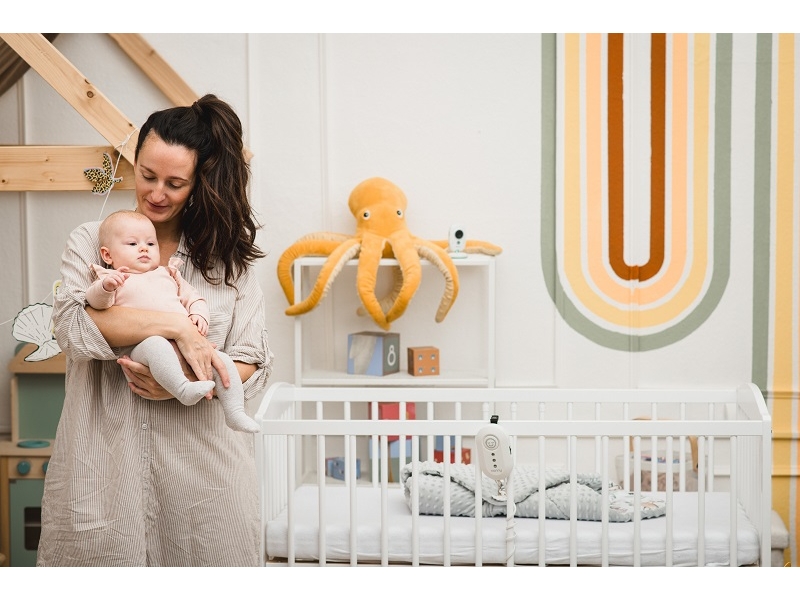The sensor pad contains a very sensitive sensor that can detect even the most subtle movements. For the device to work properly, it is important to check that it is not picking up vibrations from the environment.
The in situ monitor life span test should not be reserved only for the initial installation, but should also be part of the process when changing the location of the crib or monitor.
Here are the key steps to take:
Check the green signal
While the baby is in the crib, watch to see if the green light flashes. This signal reacts to the baby's breathing and movements. The frequency of the flashing corresponds to the baby's movements or breaths.
Removing the baby from the crib
Remove the baby from the crib and stand back. Wait until the vibrations caused by the previous handling have settled down.
Setting off the alarm
After 17 seconds of rest, the evaluation unit emits a warning beep and then the alarm is triggered. For the first test, verify that the alarm sound can be heard in all areas where the parents or other caregivers are present. You have just verified that your monitor is functional and you can fully trust it. You can turn off the alarm using the switch.
Removal of interference
If the green light flashes when the baby is not in the crib, it may mean that the monitor is sensing environmental distractions. Remove any potential distractions such as vibrations from appliances, air drafts or mechanical vibrations. If you have a floating floor, we recommend that you carpet the legs of the cot.
By performing this test regularly, you can verify that the monitor is functioning properly, while eliminating the potential danger of false signal evaluations.

